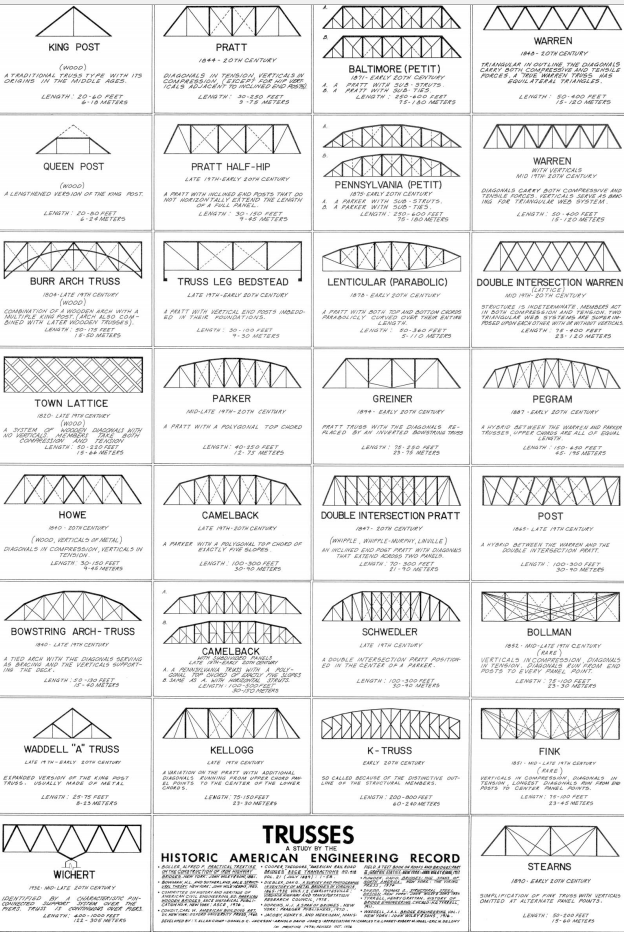 |
| 20161214 3936 at camera resolution From Wabash Cannon Ball Bridge |
For many years, pin-connected construction wa favored because of ease of assembly. However, the system had structural disadvantages. In a pin-connected truss, the pins connect the various members at joints. These members, including both tension and compression members, have holes in them to accept the pins. A pin itself is a "shear" member, meaning it resists opposite forces in a straight line across the diameter of the pin itself. This presents several problems. Because they are keys to the structure of the bridge, pins must be inspected, a difficult job that typically requires jacking up the truss, which relieves stresses and allows the pins to be removed for inspection. This operation generally cannot be accomplished with the bridge in service, and thus results in unacceptable delays. More serious is that if a pin fails at the wrong moment it can result in a catastrophic failure of the whole structure. [I wonder when there would be a "right moment."]
After 1900 railroads moved toward riveted connections for major joints.The other reason old bridges used pin connections is that it allowed the truss members to pivot with respect to each other. That means twisting forces were not transferred from one member to another. By isolating the forces applied to each member, it simplified the forces on a member so that engineers could analyze the forces in a bridge.
After reading that, I wondered if I could determine if the light trusses of the Wabash Cannon Ball Bridge were pin connected. Because of their light weight, I had already concluded the spans were probably built in the 1800s when steam locomotives were still rather light. As you can see above, when I zoom in to camera resolution, I can see that it not only was constructed with pins, this 19th Century technique survives to the 21st Century.
Brian goes on to explain that pin-connected was replaced by riveted gusset plates, which had become standard practice after World War I. Rivets were replaced with high-strength bolts starting in 1960. Bolts are more expensive to manufacture, but the skill and tools needed to install them and replace them is less sophisticated than that needed by rivets. We know from Historic Bridges that rivets were no longer used after the 1970s because he won't write about bridges that were built after the "rivet era."
It is interesting to note that the engineers of the Cannon Ball bridge paid attention to metal usage because the diagonal tie bars are significantly thinner than the bottom cord tie bars because the tensile forces are smaller. The picture on page 53 of Brian's book looks like they used just one thickness of tie bar for every member independent of the force the member needed to resist. It is a trade off between the economy of scale of using standardized sizes vs. minimizing steel content.
 |
| Truss HAER Poster, the link was found in A Brief History of High Railway Bridges |
No comments:
Post a Comment